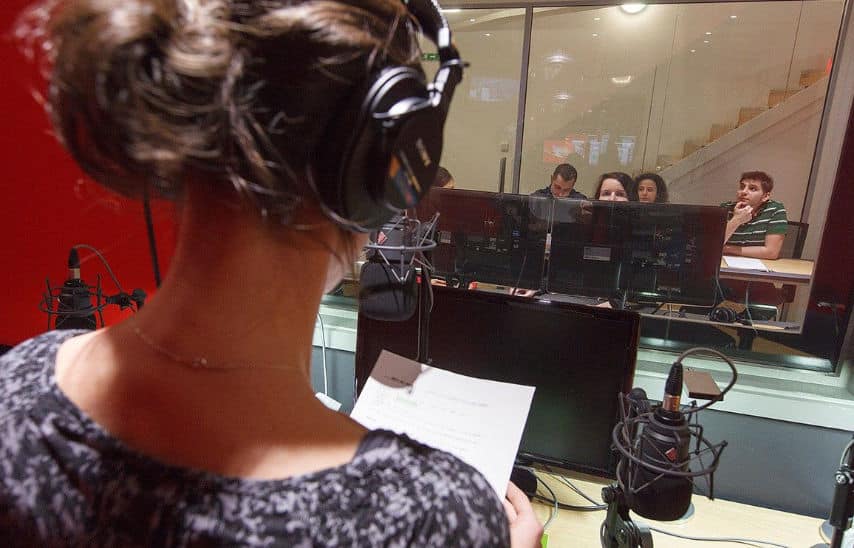Written language and spoken language differ in several ways which affect English subtitles. Subtitles are audiovisual translation mediums that are becoming increasingly popular. This, for both translations of audiovisual content in foreign languages. And, they work as means of making audiovisual programmes accessible to the deaf and hard of hearing.
Table of Contents
ToggleBut what are the main differences between Written English and Spoken English?
First of all, written English is more formal and complex than spoken English. This is true for the so-called ‘informal writing’ too. An informal written text will always have a higher degree of formality than the spoken word. Secondly, spoken English is more impromptu, while written English is way more polished and structured regardless its degree of formality. Specifically, the spontaneity of oral speech leads to hesitations, repetitions, interruptions and incomplete sentences. These are normally absent in a written text. Likewise, spoken language is often characterised by improper grammar, not only because of its inner spontaneity but also because listeners can grasp the meaning by other factors. For instance, speakers’ body language.
That’s not the case for writing, where a faulty use of grammar is likely to affect text comprehension. Then, punctuation helps a written text flow and eventually conveying tone and emotions while oral language has no punctuation. In the latter case, pitch tone and timbre clearly state speakers’ emotions and state of mind most of the time. Finally, spoken language features slang terms and tags. For those unfamiliar with linguistics, it’s worth briefly defining the latte. Tags are either questions, statements or imperatives added to a clause to invite a response from the listener. For example, ‘You’re a musician, aren’t you?’
And how do these differences affect subtitling?
Subtitling should reflect the register and tone of the oral speech as much as possible. This, whether the subtitles are a translation of a foreign-language dialogue for a hearing audience, or have been created for the sake of the deaf and hard of hearing. In addition, the audience are well aware they’re reading a text that’s a rendition of spoken language. To this purpose, the English syntax simplify the process as the use of informal features such as contractions – for instance ‘isn’t’ instead of ‘is not’ – and starting a sentence with ‘and’, ‘but’, ‘or’ is acceptable in informal written texts. Thus, it’s acceptable to use them in subtitles if it helps conveys the same degree of informality/orality of the source text.
However, subtitling is still a form of written language and as such it should follow syntax and grammar rules at least to a certain extent. Also, subtitles must be easy to read as viewers need to process both what they read and what they see on screen. Therefore, subtitlers must use punctuation even though this is absent in spoken language. They should find a way to syntactically connect chunks of dialogue that might be not linked.
Furthermore, punctuation not only helps subtitles flow but also conveys speakers’ tone and emotions. Nevertheless, it is good practice not to overload subtitles with punctuation marks other than the basic commas and full stops as this could affect readability. Anyway hearing viewers can detect such characteristics from the audio and the deaf and hard of hearing will have them shown in brackets alongside the subtitled dialogue, making it not necessary to overuse colons, semicolons, exclamation and question marks.
When can English subtitles deviate from the audio?
At this point, it’s apparent that subtitles need to deviate from audio from time to time, but subtitlers should do so wisely. Precisely, there are two most common scenarios when deviating from the audio is advisable. The first one is when the dialogue is characterised by poor grammar and the meaning cannot be grasped by visual and aural clues. As hinted before, in this case the subtitler might need to add some connector to make it flow syntactically. The second one is when the dialogue has repetitions, hesitations and tags. Notably, including repetitions and hesitations would jeopardise the structure of the written text, making it redundant. In fact, an hearing audience could grasp them from the audio while the deaf and hard of hearing will likely have such information displayed in brackets.
Moreover, avoiding them makes room for more relevant information. Similarly, subtitlers can get rid of tags if they clash with time and space constraints. However, it would be good to retain the latter whenever possible in order to reflect the oral dimension. To this purpose, interruptions and incomplete sentences should be also replicated with the help of ellipsis or hyphens. This is particularly true in the subtitling of movie dialogues, where speakers’ characterisation is paramount.
English Subtitles Fun Fact:
Did you know that in the UK, 7.5 million people use closed captioning? And, of that 1.5 million are Deaf or hard of hearing.
Enjoyed this blog post? Check out a similar article like:
- SDH Subtitles: Subtitles for the Deaf or Hard-of-Hearing
- What is Closed Captioning? Difference from Subtitles.
- Should Non-Standard English be Used in Subtitles?
Remember, if you’d like to discuss your next project, then give us call on +44 (0) 207 095 5730 or email projects@golocalise.com for a quote.
As well as providing translation services for several decades now, we also provide voice over and subtitling services. Whether you need voice overs or subtitles, we’d love to hear from you.






















